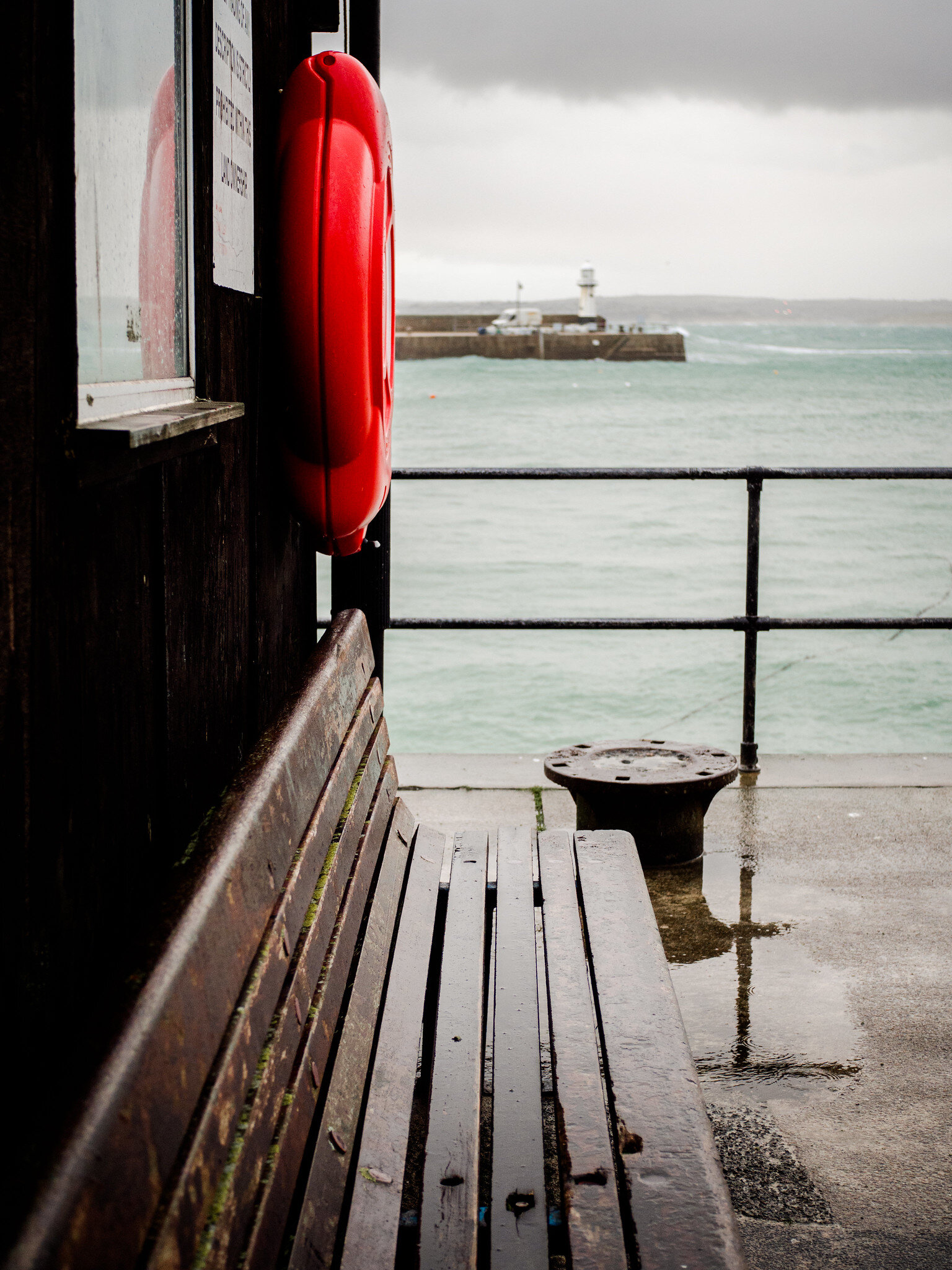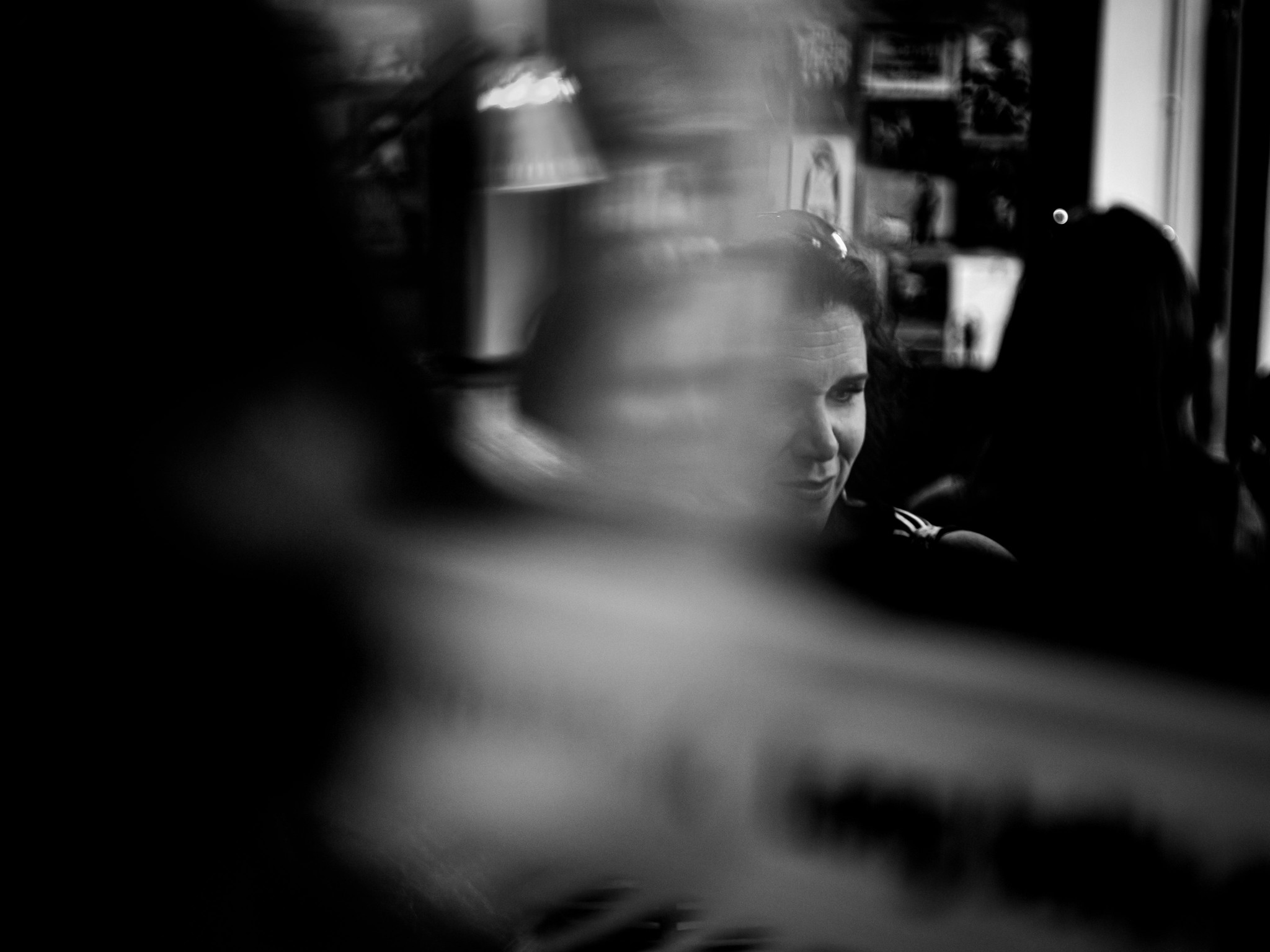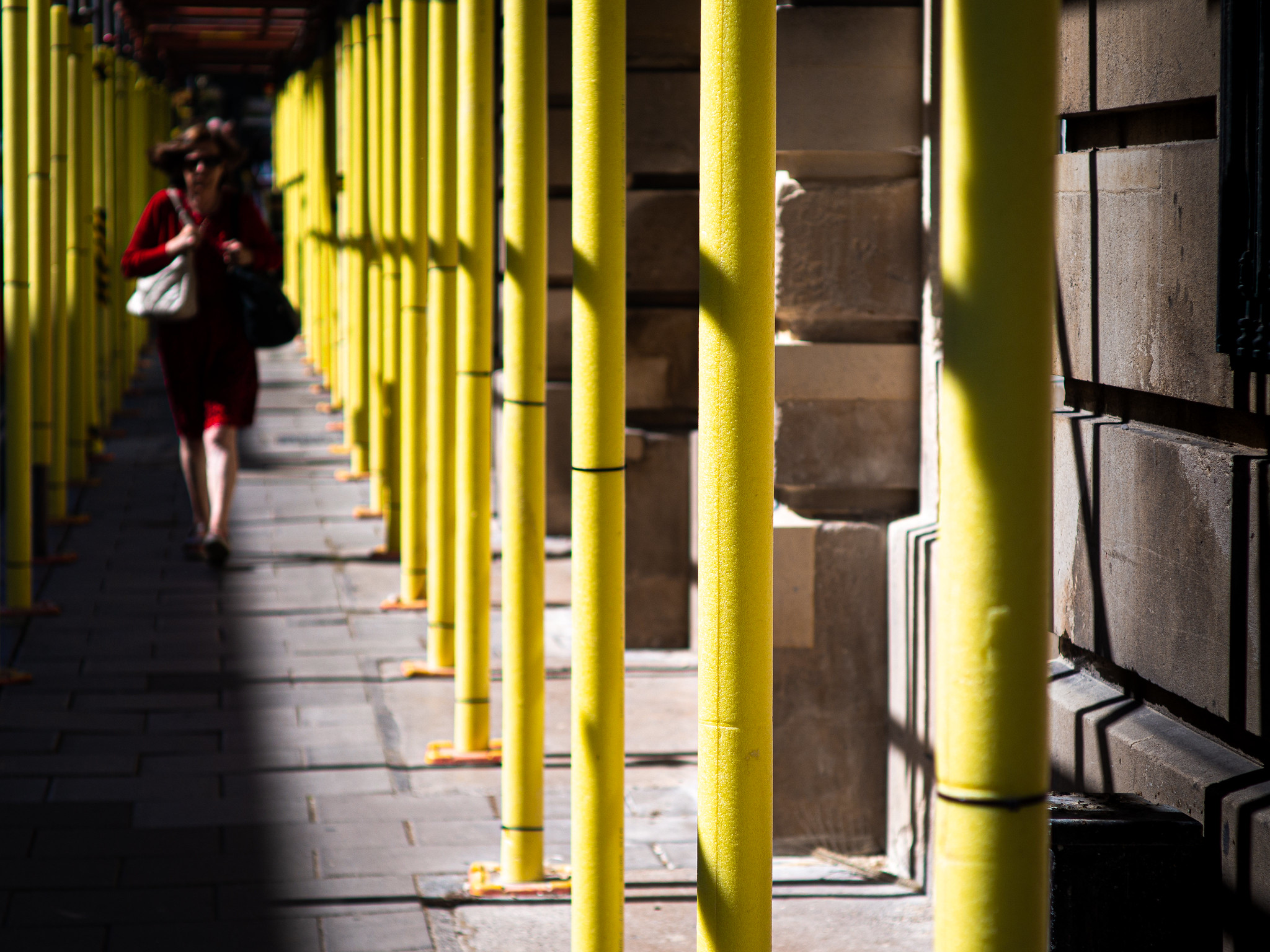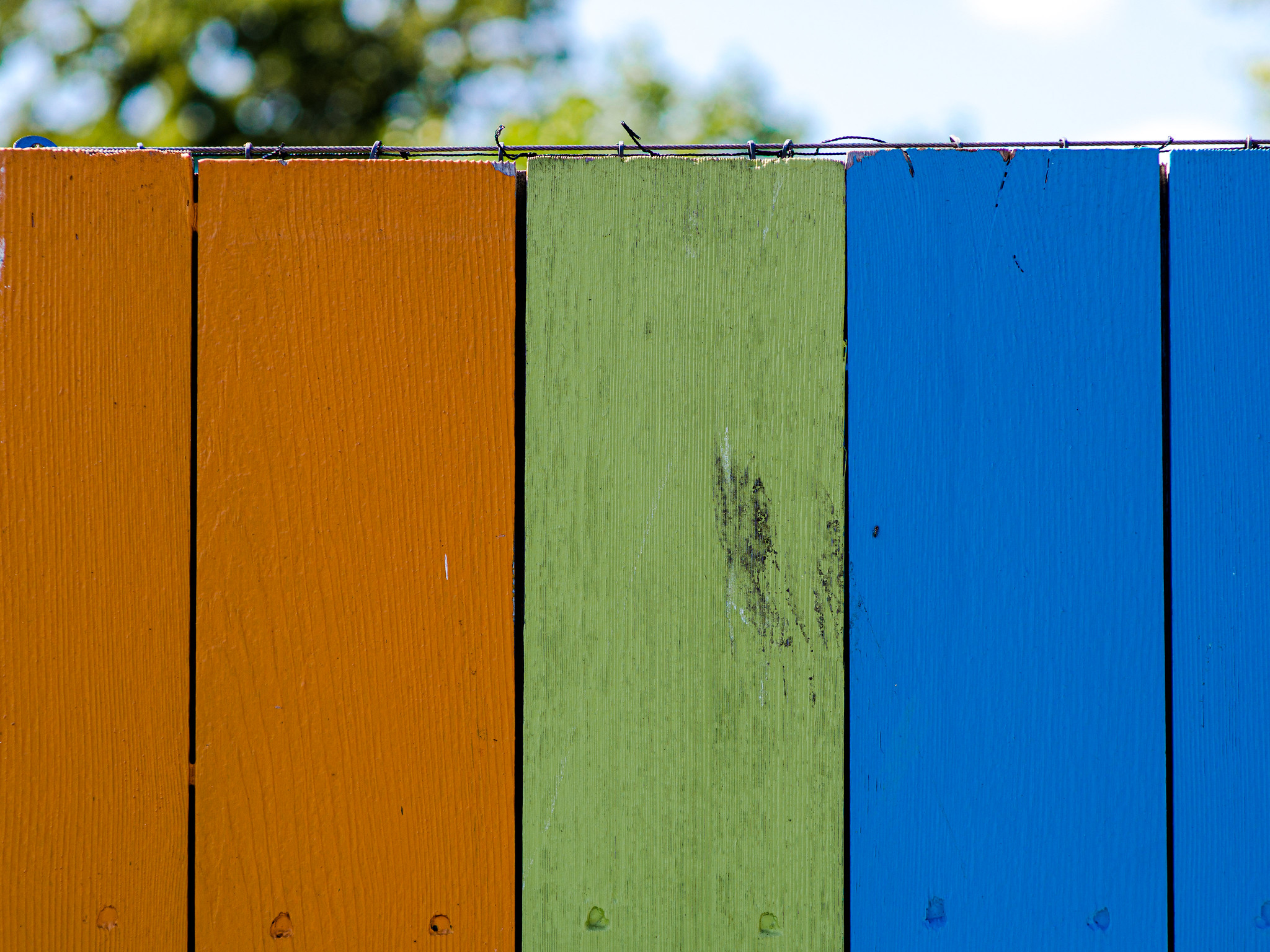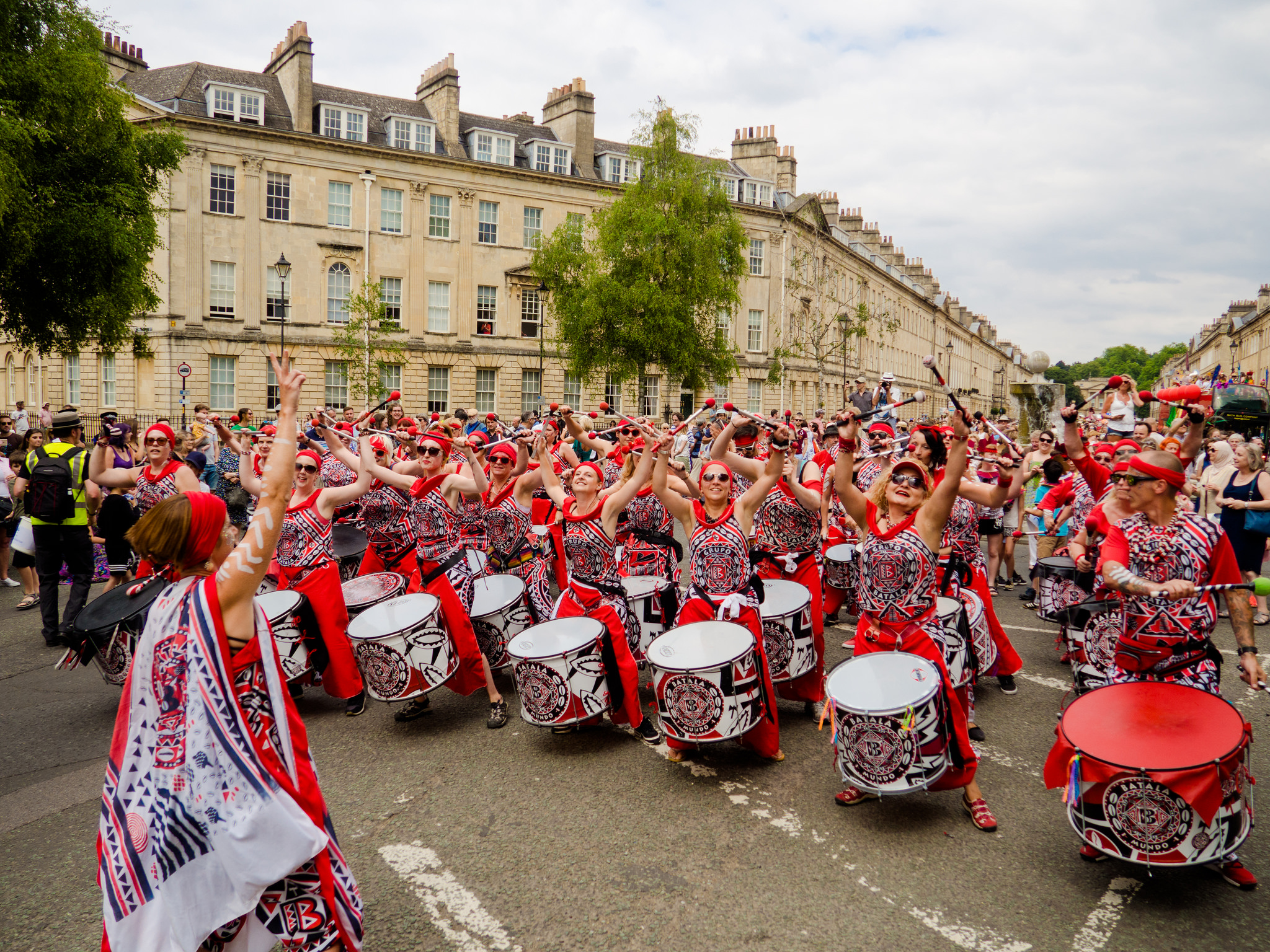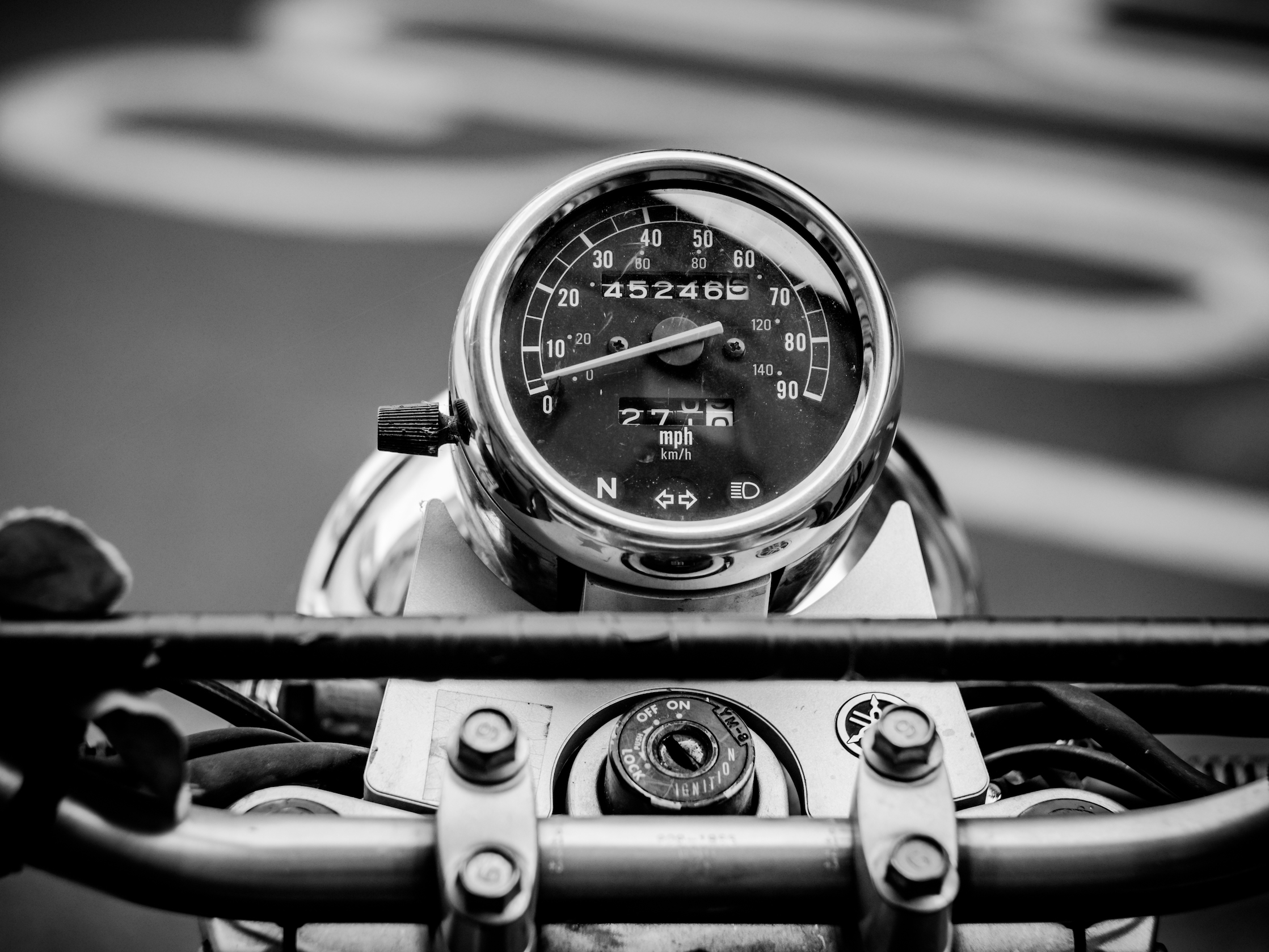I’ve been keeeping my eye on the Meike lenses for a while. There’s a lot of nice things being made very affordably in China at the moment. From my experience with the 7Artisans 55mm, I knew that there were great things out there for very little cash. But I didn’t really know whether there was much point in buying the 28mm (which is what I was looking at) as the focal length I already had covered.
However, something I wanted was a little pancake lens for my Oly EM10ii. Something which I could just set on an aperture and snap some shots. Also, as I’d bought my Bronica… I wanted to be able to take both that and my Oly out in as small a package as possible.
Straight away I’ll say…. these are not ‘perfect’ lenses. There are technical issues and they’re manual focus only. So if you need an ultra sharp, autofocus lens which costs less than £50, then feel free to find it!
However, what the Meike does is gives you bags of personality. When light is optimal, you’d be hard pushed to see the difference between this and a much more expensive lens. When the weather is not too good then you’ll be working hard with it. But it is definitely worth it!
The only downside (and this is VERY picky) to this lens is the lens cap. It’s one of those push-on ones. Seriously…. they were shit in the 70s, they’re shit now. Every five seconds it falls off. Off to eBay for a cheap cap that works!
But back to the main show: It’s not the sharpest lens out there, but it gives your shots a nicely classic look. And being only manual focus, it WILL make you want to nail that shot more!
I really like it. And for less than £50 you really can’t go wrong.
7Artisans 55mm f1.4
I’ve been keeping an eye on the 7Artisans lenses for a while now but only recently decided to take the plunge for one. Having researched the various options, I went for the 55mm f1.4, which on my Olympus equates to 110mm on a full frame camera. This moves me into a bit of a telephoto area (although pretty much the same focal length as some of my vintage lenses such as the Zuiko 50mm and Helios 44-2).
Anyone who might stumble across my ramblings on here will know that I like putting vintage lenses on my Oly. However, once the adapter is on the camera with an old, sturdy piece of glass…. it gets kind of heavy and cumbersome at times. So I wanted to get something in the 50mm area which would be a native lens - small, well built and light.
Both the 50mm f.1.8 and 55mm f1.4 looked good. But which one? Slightly different focal lengths and slightly different max apertures. Do I need f1.4? Hmmmmm…
My decision on the 55mm came down to this:
I don’t tend to need the f1.4 aperture but it’s there if I want it.
The 55mm was a little closer to my Helios which I’ve been enjoying working with recently.
The minimum focus distance is closer.
I think overall, it just seemed like a slightly more flexible lens.
7Artisans have now got a distributor in the UK, so no more need for buying over eBay. Service was excellent - good response to emails and quickly dispatched lens. The lens arrives in very nice packaging. This does not look like some a cheap lens and on first picking it up, it doesn’t feel it either. A nice solid, metal lump in my hand. A reassuring weight without being heavy.
One concern I’d had before buying was the aperture ring being clickless. A couple of my vintage lenses are clickless and they are too loose - I never know where my aperture is set. No worries here; the aperture ring is very nicely damped so you have to be quite decisive in adjusting it. And I’ve not knocked it whatsoever once set. The same with the focus ring - just the right amount of give to allow for quick, snappy focussing.
Just so you know, this review is not going to be overly technical. I’m not a pixel peeper. I’m more interested in making images than dicking about checking if the corners of a picture are perfectly sharp after zooming in 100x. That said, here are some shots before my thoughts on using the lens in the real world…
I’ll start by saying that I gelled straight away with this lens. It works really nicely for my style of photography.
There were some shots I missed my focus through not being used to the focus ring, but that’s just down to practice. Overall I was getting nice shots within an hour.
The colours look great. Nice and natural with good contrast. I usually shoot aperture priority and dial my exposure compensation down 1/3 - 2/3 of a stop and everything was coming out of the camera great. Once into Lightroom, I just added a little bit more contrast, sharpening and saturation to my taste and I found a lovely pop to the shots. If anything, it might saturate the greens a little bit; but nothing I couldn’t pull back a bit.
I’d not shot with an aperture as wide as f1.4 before but gave it a go to see what it could do. Depending on the subject, it is quite hard to nail focus perfectly when that wide. And even the shots which were shot that wide open and had a good focus point were a little soft. Not offensively so - still useable, I just wouldn’t be able to fool someone I had a £1000 piece of glass on the camera. It also has noticeable chromatic aberration at wider apertures. These were easily cleaned up in Lightroom, but were noticeable without even needing to zoom in. This is being picky, though. Because having an f1.4 lens at this price is not going to be perfect.
Stopping down to about f4 definitely solves all that, though. Like many MFT lenses, this is the sweet spot. And it looks gorgeous. Plenty sharp for me and with lots of character. This is where I really started enjoying it.
As a manual lens, it is definitely one of the easiest I have used for focussing. On a par with my Zuiko 50mm and Panagor 35mm. If I need to grab a shot quickly, is it as fast as autofocus? Probably not. But it’s a lens for taking a bit of extra time and effort to get the shot - something which is suiting how I’m shooting more nowadays. Compose, nail your focus and fire away.
I’m really loving this lens. It’s very much like a vintage lens in the way it feels to use and also in the picture quality. It’s not pin sharp like some modern lenses, but it allows me to capture natural images with character. It’s excellent. And a bargain at the price. Snap one up whilst you can.
Here are some more images….
365 Challenge - the halfway mark!
I’ve suddenly realised that today was a milestone in my 365 challenge. I’ve only gone and hit the halfway point!
It being a leap year next year (and me ending the challenge at the end of February), then the 365 challenge is actually 366 shots. So today’s image #183 is the milestone!
There’s been a variety of reasons I’ve gone for a particular shot each day. Sometimes something has just been asking for it out of many photos from that day, sometimes it’s the only shot I’ve got that day. Sometimes it has been an interesting face, sometimes it has just been an interesting composition.
I think this one falls into the latter category for me. It’s probably not my best photo ever but I like the old woman’s face (which is what I first noticed) with the sign above her. I also like her being framed by the window, the different textures within the shot and also the random face appearing on the left. I wanted someone to appear in that space and was quite pleased when it was just half a face.
This was on my trusty Oly Em10ii with my 7Artisans 55mm f1.4 lens.
Standing in the middle of the road.
Night street photography workshop
On Saturday night, I decided to skip watching Eurovision and get myself over to Bristol to attend a night street photography workshop with Edo Zollo (organised by Wex Photo Video). I’ve not shot a massive amount at night and this seemed like a good opportunity to get some hints and tips from someone who is making some great work in the dark (I’d recommend checking out his work www.edlondonphotography.co.uk).
There were 13 of us in the group, all with varying experience in terms of how long we’d been shooting and also what kind of work we’d been producing. There were landscape photographers wanting to try something different, someone who was just beginning with their photography (although from what I saw they did have an eye for a good shot), motorsport enthusiasts used to working with long lenses, and a couple of us who were already used to more street-orientated work. So it made for a mixed bag of people.
After introductions and a natter over our kit and a drink, it was time to head out into the night.
Edo had been scouting out locations already and had found some dark alleyways around the Lewins Mead/Christmas Steps area. We were looking for capturing shadows and light - usually one light source and seeing what that gave us.
From the outset we were to try and get all our shots manually. No cheating with auto ISO, exposure and aperture. We were testing ourselves to get these shots old-skool. I did go a bit overboard and thought we were meant to be manually focusing everything too… and after finding out I was in the minority doing so, I thought I’d carry on just to make life interesting.
So I was shooting completely manually - ISO, exposure, aperture (which was pretty much on f1.7 throughout the whole shoot) and focus. It was pretty hard work in a couple of places to nail the focus in the dark, but generally speaking I got there.
One thing that surprised me was Edo saying to set our ISO at 400, maybe pushing up to 800. This wasn’t what I was expecting in such low light - I was just expecting to be at 1600 and possibly getting grainy at 3200. But I’m glad I went with his suggestion. Although some shots had a bit of motion blur, they did end up a lot cleaner and had more punch. Besides, most of my favourite photographers were shooting on film when the fast ISO that we’re now used to wasn’t available - and they somehow managed it!
I was using my trust Oly OMD EM10ii with the Panasonic 25mm f1.7. I did have my Pany 14mm f2.5 and Zuiko 50mm f1.8 in my bag but found they probably wouldn’t have been practical for how we were working. Thirteen of us in tight alleys meant I’d be further back getting heads in the way with the longer lens, and having to get up too close with the wider lens… which would mean getting in every one else’s shots constantly. Now, I’m probably guilty of getting to the front to get my shot quite often and am usually pretty mindful not to get in the way too much… but that wide lens would not have made me popular!
It was a fun evening, added to with some unexpected interaction from a lass from a nearby bar who came over to see what we were up to and then became our model for the next 5 minutes. Edo was excellent - very personable and making sure he went and chatted to everyone as we walked between locations. And I certainly learnt a few things, probably mainly on a technical level; shooting with a lower ISO for example is going to give me cleaner shots with more punch but is also obviously affects what I take a shot of. So if I’m doing that then I want a subject which is more static.
At the end of the evening we were to look through and find our five favourite shots to share. We didn’t actually get around to all sharing five, but I think I’ve narrowed mine down to these…
365 Challenge - the first couple of weeks
Somehow the past two weeks have zoomed by and I appear to be in the thick of my 365 Challenge.
As I said in my last journal entry, my 365 Challenge has two rules: it’s all to be in monochrome and there has to be someone in shot that is important to the composition.
I’ll be honest: I’m finding it a bit trickier than I thought. Some days more than others.
This is for a couple of reasons….
Firstly, my rule of getting someone in shot. That in itself isn’t an issue, but getting someone in there which is important to the composition and isn’t just incidental makes things hard at times. There have been a couple of days when I’ve become very aware of not many people around, although a wander round town at lunchtime always seems to give a couple of photo opportunities. Added to that, weekends have been tricky - working in town means weekdays aren’t such a problem. But there’s less people on the weekends near where I live.
Secondly, sometimes finding the time to get some shots is harder than I thought. I usually shoot quite a lot but some days I don’t get anything. Now I’ve set myself a challenge I have to get something! But I don’t want it to be anything - I want good shots (even though I’m well aware that not every day of the year is going to bring something fantastic). And this past week has been hectic at work so I’ve often not had the time to get out with my camera.
However, I am finding that it is changing my approach to my photography already. I’m finding that I’m shooting with more sense of purpose and also noticing possibilities for a shot more than before. I’ve taken to hanging around in a spot for something to happen to make a shot work (see the puddle shot below) or scouting out a location (the guy on the rooftop - I walked round that building several times for a good angle), as well as my usual opportunistic shots.
The Flickr link to the 365 Challenge is here
These are some faves from the last couple of weeks….
Bath Carnival 2018
This weekend saw the return of the annual Bath Carnival. And I was excited to be asked by the organisers to be one of the official photographers. The carnival is always great fun and brings the whole of the city centre together in a mass of noise and colour.
With the weather being gorgeous at the moment, Sydney Gardens was heaving for the day long party and the streets were full of smiling people watching the procession. It's a fantastic atmosphere.
Usually for events that I'm photographing for myself I'll have a mix of colour and monochrome shots. But working to a brief this year, I knew that I'd be doing them all in colour. I'd planned on some shots for my personal use being in monochrome but then decided against it when editing. The day was so colourful I decided for a change to just go with that carnival atmosphere.
I love the challenge of events like this. I find it quite an adrenaline rush being in the thick of it, trying to create good shots and capturing the essence of what is going on.
To make life more interesting for myself, I was shooting a lot of it with my 135mm manual telephoto lens; so not only was I trying to shoot stuff quickly but I was also not having the safety net of auto focus. However, this only added to the enjoyment! If I wasn't shooting with that then I was going to the other extreme - using a wide angle lens to get in really close to the action; you definitely feel a part of what's going on when you've got a thunderous drumming band getting pretty close to your face (note to self - definitely need a nice wide angle prime!)
The Carnival is non profit and does workshops with many groups to bring the whole thing together. You can donate to keep it running at their Localgiving page.
Here are a few choice shots. There are quite a few more over on Flickr.
Geeky stuff!
I used my Olympus OMD EM10ii with these lenses...
Olympus Zuiko 135mm f3.5.
Olympus M.Zuiko 14-42 f35-5.6ii.
Panasonic Lumix 25mm f1.7.
Helios 44-2
The latest addition to my lenses is something I've wanted for a while - a Helios 44-2 f2.
It is thought to be one of the most mass produced lenses ever, which is what makes them relatively easy to find... and also cheap! Manufacturing began in 1958 in various factories - the one I have is a 1973 model made by KMZ. Like many Russian lenses, it is a copy of something more expensive, in this case the Zeiss Biotar.
It is a 58mm lens, which makes it 116mm on my Micro Four Thirds Olympus. So, longer than I'd usually use but I'm finding I'm adapting quite well to various focal lengths of the different vintage lenses I'm playing with at the moment.
One of the most well known attributes of this lens is the swirly bokeh. Shot wide open and with a favourable background at the right distance, it has a very unique look. It's pin sharp in the centre and then the swirls get more drastic the further out you go. I've seen portrait shots with a background of foliage work very well with this. You can see the swirls starting to appear in the shot of the Coke can below.
Having said all that, with a different kind of background the bokeh has no swirls and is ultra creamy!
There were several variations of the Helios made. The 44-2 supposedly makes more swirliness than some of the later models. But it also has a pre-set aperture ring, which is something I've not used before. Basically, there are two aperture rings - the first one has clicked stops on it as usual and you can set that at what you want your smallest f stop to be. So, if you want a range of f2 - f5.6, you set the aperture ring to f5.6. The second aperture ring is then clickless and will allow you to do whatever you want between f2 and f5.6. I thought it would be a bit odd to use but after a while I just forgot about it; although there were some times when I noticed the aperture wasn't where I thought it would be... more practice is needed!
It is also very good for focussing with. Some manual lenses are a bit tricky to get it nailed precisely. But this is very quick in bringing into focus. And it focusses very close too - I can almost shoot macro!
I bought the Helios from Wycameras in Leeds who I highly recommend and was delivered just in time for me to have a week away in Cornwall. So I'll be having a really good chance to put it through its paces.
A big new addition to my lenses...
A couple of months ago I bought myself a 135mm Zuiko lens (see previous post). And since then I've been using it quite a bit - particularly on my OM10, although I need to scan the images from those once I buy a new scanner (more on that in future posts).
However, I knew that for a telephoto I'd still need even longer for the occasional use at race circuits. So I started looking at 200mm lenses - mainly Zuiko, and also some Vivitars. I wanted as fast as possible which is f3.5 or f4. And after casually watching things on eBay and looking at various secondhand sites, I discovered a 200mm f3.5 Mitsuki lens.
Mitsuki? Never heard of them. But it was £15. And nobody else on eBay seemed interested in it. So I did a bit of research. And it appears that it was a rather obscure lens from the late 1970s which was made using the (at that time) state of the art computer system at Tokina. So really... it was made by Tokina. And even more interesting (if you're a geek like me) is that it came out of the Tokina factory at the same time Tokina were making lenses for Vivitar. Which is a good thing!
So, I got it for £15. And I've taken it out and about a bit.
And here are some tests I did with it.
I think it was quite a bargain. Wide open it does have some fringing - on high contrast areas there was a bit of purple but I soon managed to clean it up. And in the last photo you can see a bit of green fringing. But stopping down sorts it out too.
Quite heavy though!
And long. Very long. Even longer with the retractable hood out.
To be honest, it's so long it looks a bit silly on my Olympus.
But hey.... it was only £15 and should work nicely for shots of Fernando Alonso heading in to Stowe corner in August!
Using a telephoto lens
Telephoto lenses. Not something I usually use.
However, I have recently acquired an old Olympus Zuiko 135mm f3.5 lens - which makes it a 270mm lens on my Olympus EM10ii, due to it being a Micro Four Thirds camera.
How did I come to buy a focal length of lens which I wouldn't usually touch?
Well, a good friend of mine has asked me to be the photographer at her wedding. And straight away my first thought was lenses. Handily, my brother (https://www.worsfold.photos/) has just started shooting on a Sony and offered me his MFT kit to use, including the 17mm f1.7 and 45mm f1.8. Both great lenses which will add to my kit and should cover me.
I then got thinking about lenses with a bit more length to capture people mingling without shoving a camera too closely in their faces. I have my long zoom which I usually only get out for when I head to Silverstone (see earlier post from the Bath Carnival). But it's not the fastest of lenses and it spends most of the time sitting around doing nothing. I'll probably use it for the wedding though, just because it gives me options and I can autofocus with it to capture important things quickly.
I then started thinking about lenses for my visits to motorsport venues and whether I really need a zoom? I very rarely use zooms, preferring to use my feet. And I do get a bit annoyed with cheaper zooms and their variable aperture. If I'm fully wide with a lens at f4, I want to be able to zoom and it stays at f4. And unless I'm willing to pay vast amounts of cash for something I rarely use then I've got to put up with that. Or have I?
I looked at the exif info from various races I've been to and could see that I only really use a couple of different focal lengths with a zoom. At last year's World Endurance Championship race at Silverstone I was pretty much at 200mm most of the time, with a few shots in the 130-150mm focal length. So I got to thinking, why don't I just carry a couple of prime lenses of those focal lengths? They're going to be faster than the zoom. And I reckon the quality will be a bit better. I don't need autofocus - the cars are too fast for it to keep up.
So I went shopping. And after doing some research, the first prime telephoto I have got is the Zuiko. It's a good lens - very small for something of this focal length. It's lightweight and very quick to focus with. It also has a nifty lens hood built in.
I took it out for a wander around town on my lunch break and although it gets some nice shots, I'm finding it a bit odd for my normal kind of photography. I'm used to seeing something and pretty much knowing what I get in shot because of the focal lengths I use. With this, I'm much closer to the subject; so the photo I see in my head I'm not getting and I have to step back a bit.
It also feels a bit odd taking photos of strangers with it. Whereas usually I'm up fairly close, now I'm further away. Which feels a bit sneaky to me. It doesn't feel like I'm involved as much and gives a distance which I'm not 100% comfortable. I'm not sure if that is obvious from the photos or whether I'm reading too much into it.
I think it deserves a bit more experimenting with though. I quite like the idea of being able to get other foreground elements in to frame a subject. So maybe I just need to rethink how I work with it.
Jupiter 8
Bloody hell, it's been a long time since I've posted anything in my journal. I blame it on life getting incredibly hectic with the arrival of my Mini-me, Robyn in December.
Anyhooo.... I've been interested in various old lenses for quite a while and what effect they would have on my photography. And this seemed like the perfect time to try some out. Trying to save a bit of cash at the moment because of the aforementioned little 'un, I can't really go splashing out on some of the lenses I'd like. So I got myself a nice old Jupiter 8.
For those that don't know, the Jupiter 8 was one of the standard lenses that came with the Russian Zorki rangefinder cameras. During World War Two, the Zeiss factory in Jena were making their Sonnar lenses in a Leica thread mount. These Zeiss lenses were excellent. And when the Russians invaded Germany, they took over the factory. They took the designs and made various copies of the lenses in the Krasnagorsk (KMZ) factory to go with the Zorki cameras (which were themselves Leica copies).
The Jupiter 8 is a 50mm f2 lens. And it's rather nice. Mine is from (I think) 1968. A chrome one, rather than a black one (the chrome ones are supposedly better, the black ones from 1970 onwards became a bit inconsistent with quality apparently).
The aperture ring has no stops, which takes some getting used to.
The focus ring is quite fast and loose which means you have to be very precise (this might just be my model, of course). On my Olympus EM10ii it becomes the equivalent of a 100mm lens which is longer than I'd usually use.
But overall it's quite fun to have on the camera. And it's making me think a bit. And it gives a slightly different look, I think. A bit 'older'.
Now to try it with a Zorki and a roll of film....



